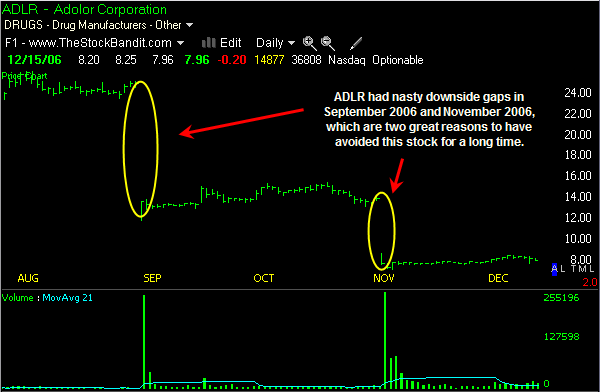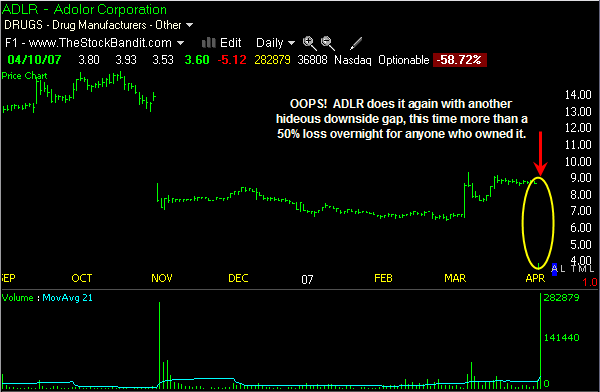Search Results for 'traders'
Beware The Mid-Day Mess
Experienced traders know that a huge amount of the volume on a given trading day is seen in the first hour and the final hour. This isn’t too surprising, especially considering the buildup of buy and sell orders which start to pile up after the market closes and continues through the night and into the morning ahead of the opening bell. Some even refer to it as “amateur hour” while these orders get flushed out. And if the old adage is true that “professionals close the market,” then it makes equal sense that the latter portion of the day also sees a flurry of activity with institutional money making moves ahead of the closing bell.
Dr. Brett put up an interesting post today which reminded me of this topic, and although he is referring to e-mini S&P futures (ES), the early and late-day volume surges are common across the board in the market.
Clearly the most liquid times of the day come early and late, which means there’s ample opportunity for traders to get hurt during the mid-day mess. The smile-pattern that Brett refers to leaves a lull during the central portion of the day, which is worth commenting on. Not only does the lack of volume make it easier for a big player to push things around, but it also is frequently characterized by choppy trading and narrow ranges. That makes it extra tough to initiate new positions and find traction, so if you choose to stay active in the middle of the day, keep a couple of things in mind. Be sure that if you’re initiating trades during the mid-day lull that your timeframe is a bit longer than just a couple of hours, or that the relative volume is strong enough in the issue you’re watching that the mid-day mess won’t take away your smile!
Jeff White
President, The Stock Bandit, Inc.
Swing Trading & Day Trading Service
www.TheStockBandit.com
[tags]Stock Market, Day Trading, Stock Trading, Investing, Swing Trading, Brett Steenbarger[/tags]
Honor Thy Stop
There are a handful of trading books which I have read many times and keep returning to on occasion, including Reminiscences of a Stock Operator, and the Market Wizards series by Jack Schwager. I would also recommend one other book which is written by a Market Wizard, Marty Schwartz, which is called Pit Bull.
Schwartz writes candidly about his history as a trader, including the struggles he went through for many years before becoming one of the biggest and most successful S&P 500 futures traders that has been seen. One portion of Pit Bull is called “Honor Thy Stop,” and it contains some excellent thoughts regarding the use of these safety nets in trading. Here are several of his comments on the topic of stopping out of trades. I found these very useful, so you might relate to them as well. I have a few comments thrown in there too:
“You’re the only one who’s emotionally involved in your position.”
How true! The market really doesn’t care about what we’re feeling, which is all the more reason to approach trades with more logic than emotion.
“Taking a loss is hard to do because it’s an admission that you’ve been wrong. But in the market, being wrong some of the time is part of the game.”
It’s how we manage our wrong trades that will keep us on track.
“That’s the problem with amateurs, they only have half a plan, the easy half. They know how much of a profit they’re willing to take, but they don’t have the foggiest idea how much they’re willing to lose……Their plan for a position that goes south is, “Please God, let me out of this and I’ll never do it again,” but that’s (false), because if by chance the position turns around, they’ll soon forget about God. They’ll go back to thinking that they’re geniuses…”
It is amazing how being on the wrong side makes us repent for all of our trading mistakes, but when we’re right we want all the credit.
“What most people fail to realize is that while you’re losing your money, you’re also losing your objectivity. The market…..doesn’t care about you. That’s why you have to put aside your ego and get out.”
“…a stop is an investment in self-preservation because if you’re wrong, it saves you those extra dollars that you’d lose by hanging on to a losing position. It keeps you from digging the hole deeper and it makes it easier for you to climb back out.”
This is a great way to view the use of stops. They are safety nets for our well-being as traders, so why not use them.
“The more you lose in a trade, the less objective you become. EXITING A LOSING TRADE QUICKLY CLEARS YOUR HEAD AND RESTORES YOUR OBJECTIVITY….. By preserving your capital through the use of a stop, you make it possible to wait patiently for a high-probability trade with a low-risk entry point.”
Of course the market is always there to remind us, but it’s still good to have Schwartz’s input on the subject to remind us that a big part of what made him great was his ability to contain losses when they occurred. In fact, Schwartz even states in the book, “I can tell you how I became a winner – I learned how to lose.”
So the next time you’re faced with the opportunity to honor thy stop, remember the success of Schwartz and know that while you’re admitting defeat on that one trade, you’re simultaneously adding objectivity to your next entry.
Jeff White
President, The Stock Bandit, Inc.
Swing Trading & Day Trading Service
www.TheStockBandit.com
[tags]Stock Market, Day Trading, Stock Trading, Investing, Swing Trading[/tags]
What to Avoid During Earnings Season
This week’s Free Newsletter over at TheStockBandit.com discusses the topic of how What to Avoid During Earnings Season.
With the allure of big gaps in price following news, many traders have the urge to game earnings announcements in hopes of a quick score. However, it rarely works out though for those without an edge. So for a few ideas and thoughts on what to avoid as earnings season gets underway this week, stop by and check it out.
By the way, you can sign up for the free newsletter on the Free Newsletter page at TheStockBandit.com and we’ll notify you every time one is published. An opt-in form is provided at the top of the page which puts you in full control of your email subscription at all times.
Trade well this week!
Jeff White
President, The Stock Bandit, Inc.
Swing Trading & Day Trading Service
www.TheStockBandit.com
[tags]Stock Market, Day Trading, Stock Trading, Investing, Swing Trading[/tags]
Recovering From Losing Trades
As traders, we all go through stretches which are not-so-fun! But as they say in other realms of life, it’s not how you fall down that counts – it’s how you get back up.
One of my biggest losing trades came in EPIC a few years ago. The stock had some good momentum and lots of activity one particular day, so I bought some for a day trade. I went pretty big to begin with, and the more I watched it the more I liked it. It was moving my direction and I was feeling pretty good, so I added some more. Well, out of nowhere about an hour after my entry the thing went into freefall. Too late to check the news, the damage had been done!
I decided not to panic, and I also decided not to add….2 things I’m very glad about. Anyway, the downside slowed and the stock bounced back slightly, but I still closed it out for what was a big loss to me at the time. I went home that day from the trading office pretty disappointed that the previous couple of weeks’ gains had been wiped away with that one loss. It bruised my ego, dinged my account, and most importantly, it confused me.
Choosing How to Respond
As traders, we can’t control the news flow or what happens to the stocks we’re trading – only how we respond to it. I had gotten into a trade in size which I was confident in, and I got blindsided by an avalanche of selling. Sometimes it’s a headline, sometimes it’s a downgrade or a warning, but it’ll happen from time to time if you trade long enough.
Using Pain As A Positive
After mulling it over for the evening, I finally decided it was an isolated event and out of my control. I also decided the next day to pick up where I had left off 2 days ahead…making money. By the end of that month I had recovered fully and put my account back to new highs, which put my confidence even higher. What had felt like a major negative in the short term, ultimately turned into a great positive and a source of strength going forward. I became a better trader because of it.
So the next time you take a hit that isn’t the result of a poor decision or blowing your stop, don’t freak out. Don’t add just because you’re down. And don’t decide you’re a bad trader! DO look for a good spot to exit, take your medicine and clear your screen. It’ll help you clear your head, and you can come back when you’re ready to resume with the right mentality.
Jeff White
President, The Stock Bandit, Inc.
Swing Trading & Day Trading Service
www.TheStockBandit.com
[tags]Stock Market, Day Trading, Stock Trading, Investing, Swing Trading[/tags]
Tips for Finding Day Trading Candidates
With more traders taking a shortened timeframe in recent months, discussions are turning to just what makes for a good day trading (or scalping) candidate. Some scalpers have a handful of stocks they exclusively trade, but if you don’t, here’s a checklist to run when looking for trades to catch a piece of the action:
Trade Stocks With Volatility
Check to be sure that stocks you’re considering for day trades tend to move a lot each day. Average True Range (ATR) is a common way to gauge movement, and many charting programs will allow you to scan for this. A stock which fluctuates plenty each day will offer lots of potential for scalping, so make this a requirement.
Trade Stocks With Momentum
Whether they’re in the news or just making big waves in the market, stocks with momentum are the go-to day trading stocks. Pure day traders are willing to go long or short, so the momentum factor is applied for both directions. Recently the solar-related stocks and biotechs have been in play on the long side, while homebuilding stocks and mortgage-related stocks have been day trader favorites on the short side.
Trade Stocks With High Volume
High daily volume levels make it much easier to dart in and out of stocks with minimal slippage. Numerous orders resting at each price level or plenty of shares showing in your market depth window are what you’ll want to watch for. Because day trading usually means frequenting the same stocks multiple times during the day, making sure that the liquidity is there can prevent getting stuck in a trade without a smooth exit.
One other note is that when you find a stock which has already broken out and you’re too late for swing trading it, the odds are high that some money can still be squeezed out of it on a day trading timeframe. Use the criteria above to be sure it passes the test, and then hit it for a few dimes!
Jeff White
President, The Stock Bandit, Inc.
Swing Trading & Day Trading Service
www.TheStockBandit.com
[tags]Stock Market, Day Trading, Stock Trading, Investing, Swing Trading[/tags]
Beware the Double Whammy!
Recovery plays are always higher-risk, and while a stock may be closer to $0 than it once was, it can still fall 100% from your entry level. However, there still seems to be some appeal to traders and investors in search of “a good deal.” Be sure you know what you’re getting into when that’s your aim, because as one stock just proved, cheap stocks often get cheaper!
As a trader, I pay very close attention to the recent history of a stock’s behavior. Sure, there are occasional surprises, but stocks which make steady moves tend to keep doing the same. And stocks which have a history of large price gaps are usually prone to more big gaps in the future.
Take ADLR for example. Back in September, the stock lost 52% overnight! Then it cratered again in November, losing 39% overnight. Ouch!
 (Click for full size.) Chart Courtesy of TeleChart.
(Click for full size.) Chart Courtesy of TeleChart.But it gets worse….
On Tuesday of this week, the stock did virtually the same thing. After closing on Monday at 8.72, it shed 56% overnight.
 (Click for full size.) Chart Courtesy of TeleChart.
(Click for full size.) Chart Courtesy of TeleChart.The lesson here is to avoid stocks with an ugly history! If you dare venture into a stock hoping for a recovery, consider taking a smaller sized position because these rebound plays are far more speculative and you’ll want a lot less of them in the event of a disaster.
Jeff White
President, The Stock Bandit, Inc.
www.TheStockBandit.com
[tags]Stock Market, Day Trading, Stock Trading, Investing, Swing Trading[/tags]
Gap Lessons: When Trades Get Lucky
 I’ll never forget when it happened. I had been swing trading the stock regularly, and it had been very good to me in the weeks leading up to the big gap. I was sticking and moving, making a few points here and there, and my account was getting bigger because of it.
I’ll never forget when it happened. I had been swing trading the stock regularly, and it had been very good to me in the weeks leading up to the big gap. I was sticking and moving, making a few points here and there, and my account was getting bigger because of it.
And then came January 3rd, 2000. Emulex (ELX) gapped up a whopping 47.5%. It was completely huge, and I was stunned. I had never caught a gap so large, and I was instantly frozen in disbelief and excitement. “This stock is headed to the moon, and today must be the day,” I thought.
Or was it??
Soon after it opened, it marked the high of the session roughly up $29 (just about $2 higher than the opening level), and soon worked its way lower to finish positive by only about $7. BUT, I got lucky three times that day…
The first way I was lucky was that it gapped higher to begin with.
The second way I was lucky was that I panicked and sold after it started falling like a rock, getting out well above the closing price.
The third way I was lucky was that I learned a valuable lesson: TAKE THE MARKET’S GIFTS!
Times Have Changed – Slightly
The gaps aren’t as big these days because the market’s not as volatile, but gifts still come from the market and you just might get one if you’re lucky. When it happens for you, keep a couple of things in mind:
* It’s alright to sell at least SOME of your shares. Too many investors and traders think they must be in a full position or close the trade completely. But with commissions so inexpensive these days, it can really pay to make partial sales and pay the commissions for multiple exits. Why not lighten up your exposure and make some of those gains real?
* The professionals are probably selling. Market makers and fund traders love to flip shares into strength, knowing they will be able to reload at lower prices after the euphoria wears off and the little guys stop buying. They are the big dogs that can really move the markets, so follow their lead and use your agility to book profits when the getting is good.
* Regret is a loser’s game. Too many individual investors and traders see a big gain start to disappear, and they quickly resolve to exit the trade once it returns to its high-water mark. When it continues to sink lower and lower, regret sets in like a millstone around their necks and prevents them from bailing out while they still can. Don’t let regret dictate your decisions. Use your head – making logical decisions under the gun can mean the difference between failure and survival in the market, so don’t get greedy or you’ll regret it. The idea is to compound your money, not your mistakes!
Jeff White
President, The Stock Bandit, Inc.
www.TheStockBandit.com
[tags]Stock Market, Day Trading, Stock Trading, Investing, Swing Trading[/tags]






